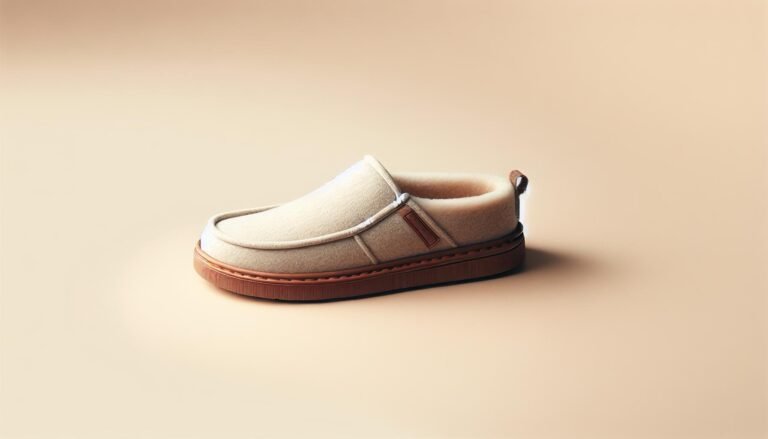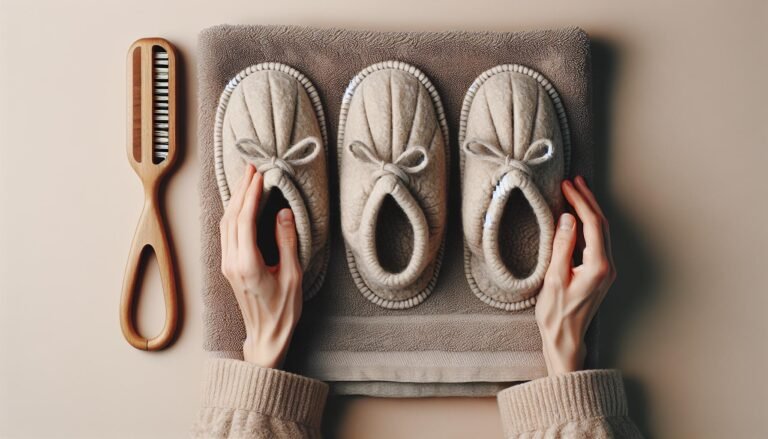Basketball vs. Volleyball Shoes: Spot the Differences
Ever wondered if you could hit the volleyball court in your basketball kicks? I’ve seen plenty of athletes ponder whether basketball and volleyball shoes are interchangeable. It’s a valid question, considering both sports involve a lot of jumping, quick movements, and a need for stability.
But here’s the thing: while they might look similar at a glance, basketball and volleyball shoes are designed with their specific sport in mind. They have unique features that cater to the distinct demands of each game. I’m here to dive into what sets them apart and why it’s essential to choose the right shoe for your sport.
Basketball Shoes: Designed for the Court
When I’m considering the right footwear for basketball, I understand that basketball shoes are specifically tailored for the hardwood. These shoes are built to handle quick lateral movements, sprints, jumps, and the overall intensity of a basketball game. I’ve noticed that most basketball shoes come with a thick, sturdy sole that provides stability and support. This is vital as it helps in preventing ankle rollovers, a common injury on the court.
One of the standout features of basketball shoes is their high-top design. This design offers additional ankle support that is crucial during high-impact landings. Unlike other sports footwear, basketball shoes are also constructed with a pivot point on the outsole, which helps in making swift directional changes—a necessity in a game that requires rapid movements.
In terms of cushioning, these shoes are often equipped with specialized cushioning systems like Nike’s Air technology or Adidas’s Boost. These systems are engineered to absorb shock and deliver responsiveness. It’s an essential factor since basketball involves constant jumping and the feet need all the protection they can get from the hardcourt impact.
Basket durability and traction are also top-notch in basketball-specific shoes. They feature outsoles designed to grip the court surface, reducing the risk of slipping during fast-paced play. The tread patterns are optimized for multidirectional movement, ensuring that I have control during sprints and abrupt stops.
Another key aspect is breathability, which basketball shoes provide through vents or mesh panels. Keeping the feet cool and dry is necessary to maintain comfort and avoid blisters during extended periods of play.
Finally, basketball shoes also have a variety of cushioning options to cater to different player needs. Be it a guard who needs more responsiveness for quick cuts or a center who requires extra padding for rebound battles, the cushioning in these shoes is designed for basketball-specific actions.
Understanding the intent behind the design and build of basketball shoes helps me appreciate the level of thought put into every feature. These footwear innovations not only improve performance but also reduce the risk of injuries, emphasizing why it’s crucial to pick a sport-appropriate shoe.
Volleyball Shoes: Designed for the Court
When we talk about volleyball shoes, it’s clear they’re designed with a different court in mind. Unlike the hardwood focus of basketball shoes, volleyball shoes cater to the quick lateral movements and jumps on the indoor court. This entails a set of specialized features that are fine-tuned to enhance a player’s performance in volleyball.
Shock absorption is a key component in volleyball shoes due to the sport’s high-impact jumps. The midsoles are engineered to dampen the force when hitting the ground which is vital for safeguarding joints. Gel or foam technologies are commonly embedded to provide both comfort and protection against repetitive impacts.
As for the soles, volleyball shoes typically boast a gum rubber outsole. This material provides superior grip on the sleek surface of volleyball courts, minimizing the risk of slips during rapid shifts in direction. Added to that, the tread patterns are designed for enhanced stability and support during abrupt stops and pivots.
Another distinct feature of volleyball shoes is their lightweight build. They need to be light enough to allow for swift movements and agile plays. Players can’t afford to be weighed down when every fraction of a second counts.
Additionally, breathability cannot be overlooked. Volleyball shoes also often come with mesh panels or other ventilating systems to keep feet cool under the intense pressure of the game. Overheating can lead to discomfort and distraction, something players can ill afford during crucial matches.
When it comes to ankle support, volleyball shoes usually feature a lower-cut style compared to basketball shoes. While they still provide ample support, the focus is on allowing a full range of motion for the ankle, catering to the specific demands of the sport’s dynamic actions.
It’s essential to recognize the subtle but critical differences in shoe design between basketball and volleyball. Each type of shoe serves its purpose, aiming to enhance the player’s safety, comfort, and performance in their respective sports. Understanding these nuances can be crucial when selecting the right footwear to ensure peak performance on the court.
Differences in Design and Construction
When I delve into the specifics of basketball and volleyball shoes, it’s clear that each type is engineered with its sport’s unique demands in mind. Basketball shoes often feature a high-top design, which provides additional support to the ankle during jumps and directional changes. This is vital as ankle injuries are common in basketball due to the high-impact nature of the game.
Volleyball shoes, on the other hand, tend to have a low-top design. They prioritize flexibility and stability during the rapid lateral movements that are typical in volleyball. The reduced weight and lower profile of these shoes allow for quick sprints and sudden stops without sacrificing the necessary ankle support.
The midsole of a volleyball shoe is another area where design significantly diverges. Volleyball shoes often have enhanced cushioning in the forefoot, optimizing them for the repetitive jumping and landing inherent to the sport. Additionally, the energy return of these midsoles is tailored to assist in swift movements and explosive jumps.
Basketball shoes incorporate cushioning throughout the midsole to absorb the shock from constant high jumps and to provide comfort during longer playtimes on hardwood floors. Brands frequently integrate their latest shock absorption technology into basketball footwear to minimize the impact on athletes’ joints and muscles.
The materials used in constructing these shoes also differ significantly. Basketball shoes typically use a combination of leather or synthetic materials for durability, particularly on the upper part to withstand the wear and tear of an outdoor court. In contrast, volleyball shoes often employ mesh or similar lightweight materials for the uppers, emphasizing breathability and comfort in an indoor setting.
The soles also reflect the sports’ distinct needs. Gum rubber outsoles are common in volleyball shoes for superior traction on smooth indoor surfaces. Basketball shoes, while also requiring good grip, must address varying court conditions and often have a wider pattern on the soles to prevent slipping and sliding during play.
Both basketball and volleyball shoes showcase an array of features to suit their respective court battles, making the understanding of their designs essential for players seeking to enhance their game.
Traction: The Key Difference
When diving deeper into the nuances of basketball and volleyball shoes, the traction each provides stands out as a major differentiator. Let’s break down what makes the grip on the court so distinct between the two. Basketball requires quick bursts of speed, abrupt stops, and high jumps, leading to a design that maximizes grip on hardwood surfaces. The soles are usually made of a soft rubber compound and feature a herringbone pattern, which is pivotal as it allows for multi-directional movement and helps athletes to pivot effortlessly.
In contrast, volleyball shoes feature a gum rubber outsole that excels in stickiness, an essential attribute for indoor courts. The reason? Volleyball players regularly make lateral moves and sudden stops. The superior traction provided by gum rubber also contributes to the player’s ability to launch quickly into jumps and maintain stability during dynamic movements.
Let’s look at the science behind this traction. The traction of a shoe can be quantified by its coefficient of friction (CoF), which is a measure of how easily a shoe allows sliding on a surface. Here’s a simple table to illustrate typical CoF values for different materials used in sports footwear:
| Material | Coefficient of Friction (CoF) |
|---|---|
| Gum Rubber (Volleyball Shoes) | High |
| Soft Rubber Compound (Basketball Shoes) | Moderate to High |
Basketball shoes may also feature a slightly wider tread pattern to manage the variety of court conditions players might encounter, including dusty or slightly wet floors. This aspect is less of a concern for volleyball shoes, which are specialized for pristine indoor court conditions usually found in volleyball arenas.
Understanding the CoF and sole composition is key for players who need their shoes to perform specific functions during their game. Whether it’s executing a perfect set in volleyball or driving to the hoop in basketball, the right shoe traction can make all the difference in a player’s performance and safety on the court.
By acknowledging the significance of traction in sports footwear, players are better equipped to select the right shoe for their sport, ultimately leading to improved gameplay and reduced risk of injury. Remember, it’s not just about the style or the brand; it’s the science and the suitability of the shoe for the sport that can give athletes an edge.
Cushioning and Support: Tailored to Sport-Specific Needs
When you’re sizing up basketball and volleyball shoes, one critical aspect you’ll notice is the cushioning. Basketball shoes are usually equipped with thick, soft cushioning to protect the foot and joints from the high-impact nature of the sport. The repeated jumping and the need for sudden stops mean that players need superior shock absorption to prevent injuries and ensure comfort over prolonged periods of gameplay.
In contrast, with volleyball shoes, cushioning is focused more on stability than sheer thickness. As I delve deeper into the world of volleyball footwear, I find that while there’s adequate padding to absorb impacts from jumps, there’s an added emphasis on maintaining closer ground contact. This design choice aids players in quick, nimble movements and helps to stabilize the foot after each landing.
However, it isn’t just about cushioning. The support structure of shoes for these two sports is also customized to meet different needs. Basketball shoes typically feature a high-top that provides extra support around the ankles, crucial for the twists and turns, as well as the vertical jumps that dominate the sport. High-tops help in minimizing the risk of ankle sprains that could occur from rapid directional changes.
For volleyball, the design shifts towards a low-top style that allows for an unrestricted range of motion, which is quintessential for quick lateral movements and short sprints. These shoes may provide reinforcements around the mid-foot or incorporate technologies, like added heel counters, to provide stability without the bulkiness associated with basketball shoes.
It’s evident that manufacturers have honed in on the nuances that separate these sports, ensuring that each type of shoe enhances the athlete’s performance. What’s more, they’ve crafted these shoes with the understanding that the right blend of cushioning and support has a significant impact on a player’s ability to excel on the court.
While both sports involve significant amounts of court time and a need for specialized footwear, it’s clear that the approach to design and functionality is as distinct as the games themselves. The thoughtful construction of both basketball and volleyball shoes reflects the specific demands each sport places on an athlete’s feet and legs.
Conclusion
So there you have it—basketball and volleyball shoes are designed with their specific sport in mind, each crafted to optimize performance on the court. Whether it’s the high-top construction for ankle support in basketball or the low-top design for agility in volleyball, the right footwear is paramount. Remember, picking the shoe that aligns with your sport’s unique requirements isn’t just about style—it’s about enhancing your game and protecting your feet. So before you hit the court, make sure you’re lacing up the right pair for peak performance.










